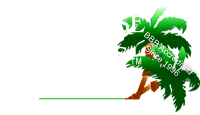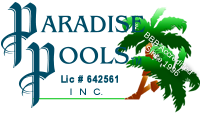What does the pool pump do?
THE PUMP
The pump is essentially the heart of the swimming pool's circulation system. It pulls water from the pool through the skimmer and main drain, pushes it through the filter, and returns it to the pool through the main returns. The pump itself consists of three components: The motor, impeller, and hair and lint trap. The motor is electric and uses either 110 or 220 volts and turns at 3,450 rpm. It is air cooled, and because of this is not perfectly sealed from the environment, so caution should be taken to keep excess water from entering the motor through the cooling vents located on the underside of the housing. Connected to the end of the shaft of the motor is the impeller. As it turns, it pulls water in through the hair and lint trap at the end of the pump and pushes it out the top of the pump through a pipe leading to the filter. The impeller contains small openings and is very susceptible to becoming clogged with debris. If the pressure on the gauge at the top of the filter is reading lower than the recommended levels, and if the amount of water flowing back to the pool has decreased, it is possible that the impeller is either clogged or damaged. This can be determined by separating the assembly at the impeller housing and checking the impeller visually. A special hair and lint trap is located at the end of the pump assembly to prevent debris from entering the impeller assembly. Inside the hair and lint trap is a basket, which should be checked and emptied at least twice per week. If the basket were clogged, the flow of water into the pump would be restricted and the pump would begin to pump air instead of water. This is known as a "loss of prime". At this point, the motor would begin to turn faster, and would eventually burn out. If this basket were not present, the impeller could become clogged, which would prevent it from pumping large quantities of water, or it could become damaged.
A. RUNNING THE PUMP
The entire operation of the swimming pool is dictated by the operation of the pump. The cleaning system cannot, in general, operate without the main pump, and the pool water cannot be filtered without the main pump operating. It is crucial, therefore, to be aware with the proper schedule for the operation of the main pump.
When To Run The Pump
There are two factors which determine the time of day when the pump should be operating: chemical demand and energy cost. Since ultraviolet light from the Still removes chlorine from the water, it is apparent that the highest chlorine demand would be during the daytime. Since most methods of chlorine addition require the pump to be operating to furnish the pool with the proper amount of chlorine, this would lead to the conclusion that it is better to run the pump during the day, rather than at night. However, due to the higher cost of electrical power during the daylight hours, these two factors must be weighed in order to determine the schedule, which best meets, the needs of each pool, and its owner. The ideal case would be to run the pump from sunrise to sunset, and this schedule would be best for those situations where the cost of electricity does not vary throughout the day. In other cases, however, it may be necessary to run the pump during the night to avoid high utility costs. It should be noted that the amount of chlorine that is added to the pool must be enough so that the chlorine level remains at or above 3.0 ppm for the majority of the daylight hours, especially in the afternoon.
How Long To Run The Pump
The two main factors in determining the length of time that the pump should be run during each cycle are the chemical demand and filtration. During the summer months, the chemical demand is at its peak, and since the bathing load is generally higher during this time, the amount of debris in the pool is higher also. This requires that the water be filtered more thoroughly to remove the excess debris. A "rule of thumb" exists which can be used to determine the length of each pumping cycle. For every 10° F of outside air temperature, run the pump 112 hour. For example, if the average maximum air temperature for a month was 100° F, then the pump should be operating for at least 5 hours per day for that month. Since the temperature cannot be accurately predicted each month, this rule should be followed conservatively. It is recommended that the pump run 12 hours per day/during the hottest summer months, and 4-5 hours per day during the winter months, and to varying degrees during the spring and fall. The daily cycle can be divided up into multiple cycles, but each cycle should be no shorter than 4 hours, since this is the minimum time it takes for all of the water in the pool to pass through the filter at least once, and it is also the recommended time between the addition of chemicals and the next water test/or pool use.
Backwashing
Before backwashing, it is important that the pump be turned off to avoid damage to the backwash valve mechanism. For filters with a side-mounted, vertical backwash valve, rotate the handle to unlock the valve, push the handle down as far as it will go, and rotate the handle once again to lock the valve in the backwash position. Make sure that the backwash hose is extended to the desired area, and turn on the pump. A large quantity of water and debris will flow out of the hose. Continue until the water which is flowing out of the hose is clear and wait an additional 30 seconds to ensure that the filter is properly cleaned. Turn the pump off and return the valve to the normal filter mode by carrying out the above steps except in reverse order. Once the valve is returned to the filter position, open the air release valve to release trapped air in top of lid or tank tops. Turn the pump on and monitor the pressure gauge for proper operation of the system. If the pump fails to fill with water, or the pressure fails to build to the normal operating value, follow the steps in the "REGAINING PRIME" section below. For filters with a top-or side-mounted rotating backwash valve, the process is similar, but instead of pushing the handle down to backwash and up to filter, the handle of the rotating valve is pushed down and then rotate to the backwash and filter positions, respectively. Once all of the trapped air is released through the air release valve and only water flows out, close this valve.




